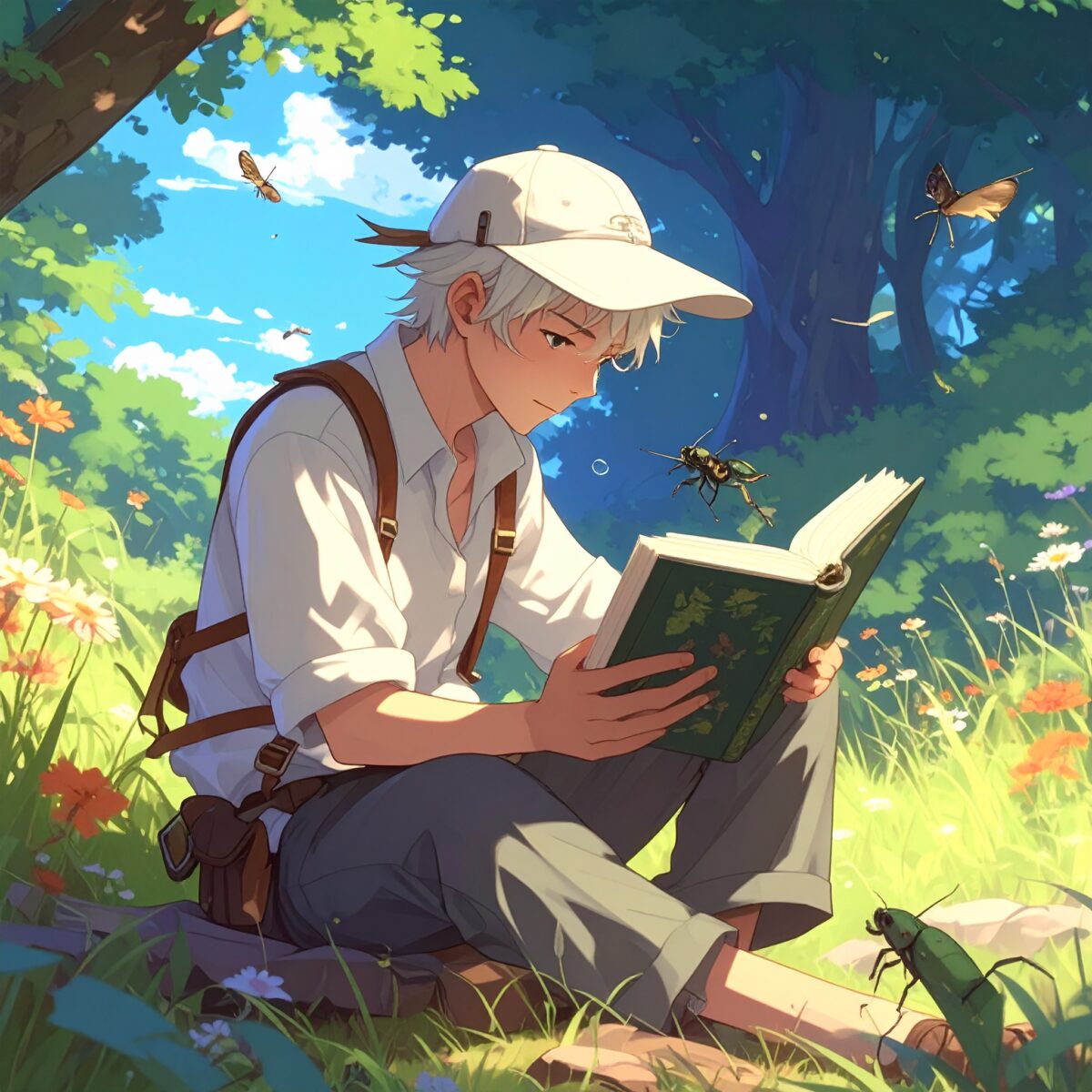Pushing through tall grass, each step filled with sound—the buzz of cicadas, the flutter of grasshoppers, the soft rustle of legs beneath leaves. In the height of summer, the fields are alive with the presence of insects, turning every patch of greenery into a treasure trove for children. Outfitted with nets, hats, and backpacks, children embark on insect-hunting excursions that go far beyond play. Observing, recording, and compiling their findings into a personalized insect field guide becomes a meaningful fusion of nature and learning.
This program takes place in richly diverse environments—satoyama countryside, riverbanks, and wetlands—offering children hands-on experiences guided by local nature experts and insect specialists. Participants gather in the cool morning hours, then head into the field with all tools provided: insect nets, magnifying lenses, observation sheets, and more—making it easy for anyone to join, even without prior preparation.
As the group explores, they learn where and how different insects live—beneath rocks, on tree trunks, hidden in the grass. A slight shift in perspective reveals a whole new world. The goal isn’t simply to catch insects, but to sharpen the eye: to notice, to consider how to approach without startling them, and to observe patterns in nature. This process naturally builds focus, curiosity, and observation skills.
Insects that are caught are placed in viewing containers for close examination. Children record names, colors, size, number of legs, and other features in their own way—sometimes with reference books and charts on hand, or by photographing them to later include in their handmade field guides. Those who enjoy drawing can sketch what they see, turning each page into a personal expression of their discoveries. The format is flexible, allowing each child to document their learning in a style that reflects their individual curiosity and creativity.

At midday, participants pause for a peaceful lunch—either homemade bento or light meals prepared with local ingredients, enjoyed in the open air. This calm interlude allows everyone to rest and listen to the sounds of nature before continuing into the afternoon. The program resumes with activities like compiling insect findings, designing covers for their personal field guides, and sharing what they’ve learned. This ensures the experience extends far beyond simple insect catching.
Family participation is highly encouraged. The structure naturally fosters two-way learning—children make surprising discoveries, while parents gain new insights and appreciation. It’s not uncommon for a parent to be moved by the sight of their child peering deeply into the grass with full concentration. Even adults who are hesitant around insects find themselves drawn in, thanks to the careful, encouraging support built into the program.
Safety is thoroughly considered. Measures are in place for heatstroke prevention and protection from bees or snakes, with clear instructions on hydration timing and restricted areas. Both children and adults can engage with nature comfortably and confidently.
For international travelers, encountering Japan’s insects and landscapes is a truly novel experience. Many programs offer English-speaking guides and multilingual materials, allowing visitors to explore Japan’s unique insect culture and the deep ties between its people and nature. It often becomes a highlight of their trip—one that leaves a lasting impression.
Insect hunting in Japan is not just a quaint countryside pastime. It’s a hands-on way to confront life, observe it, record it, and begin to understand the systems of nature. One small insect can transform how we see the world. A day filled with such moments of discovery awaits those willing to look closely.




